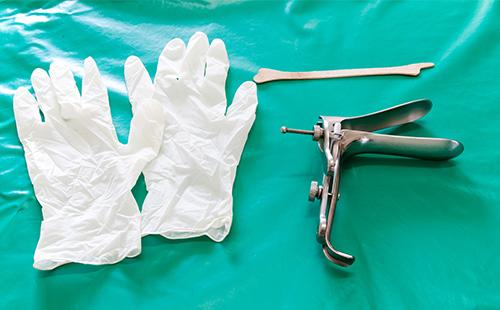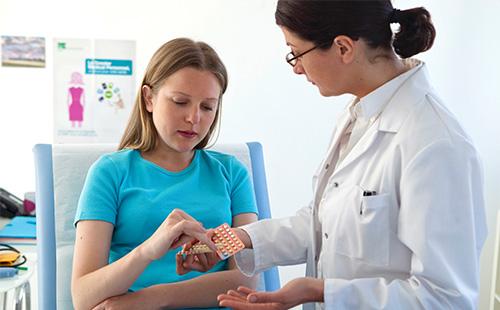The content of the article
The microflora of the vagina is in a state of fragile equilibrium. Changes in lifestyle, disease can upset the balance. Sometimes an inflammatory reaction develops as a result. But dysbiosis can begin, which is not accompanied by signs of inflammation. In gynecology, it is called bacterial vaginosis (gardnerellosis) or is also mistakenly called this infection. gardinella, gardinella or gardanella.
What prevents pathogens from multiplying ...
There are several factors that protect the internal environment of the vagina.
- Clear separation. The genitals are strictly divided into upper and lower sections, so that any infectious process can be delimited. Also, the vagina is disconnected from the external environment. The labia majora is tightly closed, which does not allow pathogens to penetrate.
- Features of the epithelium. The mucous membrane is dependent on the concentration of estrogen. Under their influence, a large amount of glycogen accumulates in the cells. Cells are constantly updated, and the dead become a breeding ground for lactic acid bacteria.
- Biological protection. Glycogen metabolism ends with the formation of lactic acid. It acidifies the environment and makes it unsuitable for the life of most microorganisms. Hydrogen peroxide is also formed, which can damage pathogenic cells. Glucose is fully utilized by lacto and bifidobacteria, so there is no culture medium left for pathogens.
... and why protection fails
The causes of gardnerella in women lie in factors that lead to an imbalance of microflora. Mechanisms are launched that lead to a decrease in the number of beneficial microorganisms. Nature does not tolerate emptiness - conditionally pathogenic flora occupies the vacated places. In some cases, it can become a trigger for the appearance of pathogens. Formation dysbiosis may cause the following conditions.
- Hormonal changes. Pregnancy, frequent stress, pathologies of the reproductive organs, menopause accompanied by relative or absolute imbalance of hormones. The vaginal mucosa is sensitive to estrogen concentration. With their decrease, glycogen storage decreases, which means that there is less nutrient medium for lactobacilli.
- Infections. Sexually transmitted diseases destroy the normal flora. Even after recovery, time is needed to restore the microbiocenosis. And chronic infections do not allow for a long time to restore the norm.
- Medicines. The course of antibiotic treatment does not pass without a trace. Most of them have a wide spectrum of action, so not only the causative agent of the disease dies, but also the normal flora of the intestine and vagina.In its place comes the gardnerella vaginalis. The treatment of cytostatics and hormones negatively affects the flora.
- Contraception. Intrauterine devices, despite their compatibility with biological tissues, cause slight chronic inflammation, which is part of the contraceptive mechanism. But such a reaction in some women leads to dysbiosis. Sometimes the fault may be the use of certain spermicidal agents.
- Interventions. Abortion, which is carried out in the late term with the help of curettage, operations also expose the microflora to a negative impact, a failure occurs.
- Decreased immunity. Under the influence of chronic diseases, endocrine pathologies, stresses and excessive physical exertion, a malfunction of the immune system occurs. Weakening of protection can also be observed in the form of a local reaction, which gives room for the development of opportunistic flora.
- Allergy and Toxic Substances. An allergic reaction is accompanied by increased immunity. This can be either a systemic reaction of the whole organism, or a local manifestation. In women, this is often caused by sanitary pads with fragrances, the use of soap for intimate hygiene.
Symptoms of gardnerella in women
Where does the garganella come from vagin and how to treat it?Gardnerella vaginalis is a small sticks and cocci with a complex structure of the cell wall. They are motionless, unable to form spores. On nutrient media, carbohydrates are fermented to form acetic acid. On antigenic structure similar to candida.
The viability of microorganisms is low. In the external environment, death can occur within 24 hours, in semi-liquid environments can persist for several days.
The source of infection may be a sick or healthy woman. Studies have shown that 12 to 47% of women are carriers of gardnerella in the absence of symptoms. The causative agent is detected in young girls, as well as in virgins. But with the development of vaginosis, the number of microorganisms increases significantly. In ICD-10, gardnerellosis is encrypted as N 89.8 - other non-inflammatory pathologies.
How does it manifest
It is difficult to confuse with another disease how the gardnerella manifests itself in women. Some signs are nonspecific, but there are also very bright, characteristic only for this pathology.
- Discharge. Normally, the amount of leucorrhoea is small, almost imperceptible. With gardnerellosis, it can increase significantly. The nature of the allocation is homogeneous, gray-white or with a yellowish tinge.
- Smell. A characteristic feature of gardnerellosis is the smell of rotten fish. It is observed constantly, but can intensify after intercourse or washing.
- Itching and burning. In the initial stages may not bother. Their accession indicates the development of a complication of the disease.
- Discomfort while urinating. Dysuric disorders also appear with complications - gardnerellosis urethritis.
- Pain. Drawing in the lower abdomen or pain during intercourse can be signs of an ascending infection.
What is complicated
The danger of gardnerella infection is the grave consequences that cannot always be eliminated.
- Increased risk of infection. Against the background of dysbiosis, conditions are created for the penetration of pathogenic pathogens.
- Ascending infection. Inflammatory pathologies of the vagina can spread to the overlying departments and lead to development cervicitissalpingitis, endometritis.
- Complications of pregnancy and childbirth. In advanced cases, it can cause premature birth, premature rupture of the membranes, chorioamnionitis and postpartum endometritis.

How to identify and cure
Before you start treating gardnerella in women, you need to conduct a thorough diagnosis. Some women are starting to search the Internet for photos of the discharge in order to understand whether it is or not. Most of the symptoms of the disease are nonspecific and can only suspect pathology. Of the clinical and laboratory data listed below, at least three must be present for diagnosis.
- Allocations. Homogeneous, gray-white, evenly cover the vaginal mucosa, with an unpleasant odor.
- Smear. According to the results of the analysis, key cells are discovered - the epithelium, which is covered by small cocci.
- Acidity. The pH of the vaginal discharge is 4.5, and in some situations even lower.
- Aminotest. A positive result of the study says that after adding 10% potassium hydroxide to the smears, the “fishy” smell either appears sharply or intensifies.
Bakseeding for diagnosis is not valuable. In healthy women, decoding can show a certain number of microbes that will give growth on a nutrient medium.
A smear is taken at each visit to the gynecologist. For bacterial vaginosis, the following characteristics must be observed:
- massive microflora with key cells;
- single lactobacilli;
- no white blood cell reaction.
Acceptable treatment regimens
It is possible to cure gardnerella at home, hospitalization is not required. But you need to choose and combine medicines correctly. Therapy will vary depending on the position of the woman. Possible treatment regimens are reflected in the table.
Table - Treatment regimens for bacterial vaginosis
| A drug | Application chart | Treatment period (days) |
|---|---|---|
| “Clindamycin” (cream, 2%) | 5 g per vagina at night | 6 |
| "Metronidazole" (gel, 0.75%) | 5 g per night intravaginally | 5 |
| Metronidazole (tablets) | - 500 mg orally 2 times a day; - 2 g once inside | 7 |
| Tinidazole (tablets) | 2 g inside | Once |
| Clindamycin (tablets) | 300 mg orally 2 times a day | 7 |
| Ornidazole (tablets) | 500 mg orally 2 times a day | 5 |

Pregnancy and disease
Bacterial vaginosis can be triggered by pregnancy or a weakening of local immunity. But the treatment of pathology is carried out not earlier than the second trimester. This is explained by the fact that antibiotics that act on bacteria are dangerous for the developing fetus. In the first trimester, the laying of all organs and systems occurs, so the negative effect of drugs is more pronounced. Later, the placenta begins to function, which provides protection to the fetus from some harmful substances. The gardnerella treatment regimen for pregnancy includes one of three drugs to choose from.
- Cream “Clindamycin” (2%). A single dose of 5 g is administered deep into the vagina once a day before bedtime. The course of treatment is three days.
- Gel "Metronidazole" (0.75%). Dosage for once 5 g, used twice a day for five days.
- Tablets "Metronidazole". 500 mg orally twice a day. The duration of the course is 7 days.
Alternative
Any bacterial infection involves the use of antibiotics. No folk remedies or homeopathy can replace these drugs. They can muffle symptoms for a while, and this is fraught with the development of complications. Therefore, after making a diagnosis, you need to listen to the doctor’s recommendations, and use traditional medicine for the recovery period of microflora.
Recovery period
It is impossible to destroy the gardnerella and leave the mucosa without normal microflora. Other microorganisms may come to the place of the disappeared microbe, and the situation will repeat. Therefore, it is necessary to populate the vagina with useful flora. For this, vaginal suppositories are used:
- Gynoflor-E;
- "Bifidumbacterin";
- "Lactobacterin";
- "Vaginorm";
- Ecofemin.
The first signs of gardnerellosis in women are easy to notice on their own. This is easiest to do while washing. If after soaping an unpleasant fishy smell appeared, then this is gardnerella. Do not delay the visit to the doctor, it is better to begin treatment at the initial stage, so as not to wait for complications.

